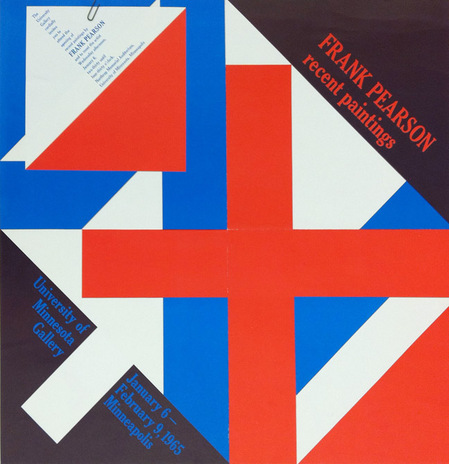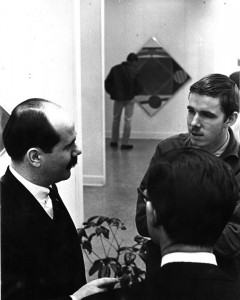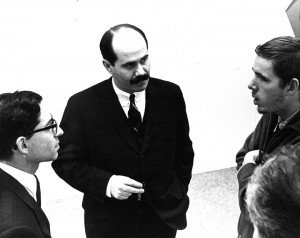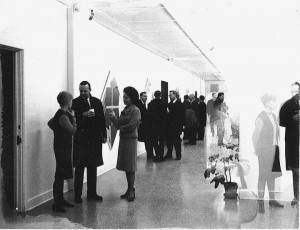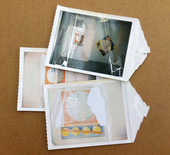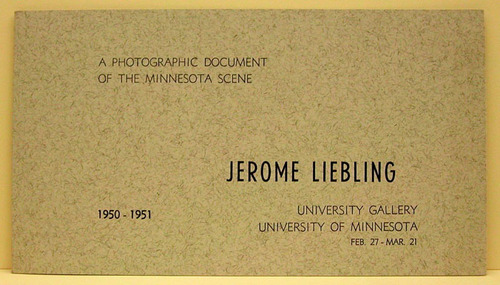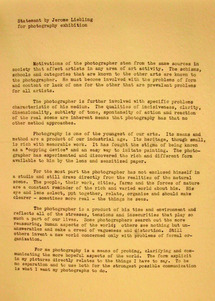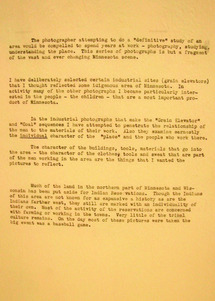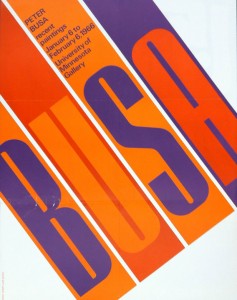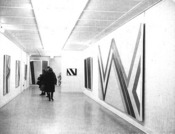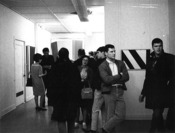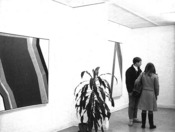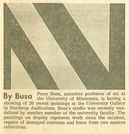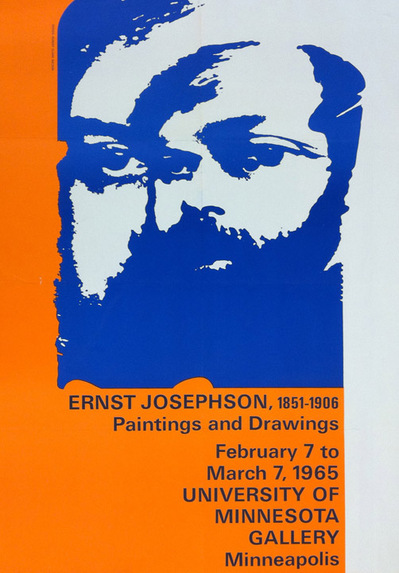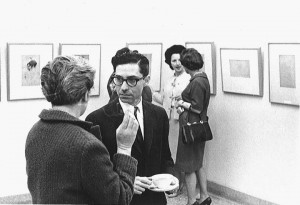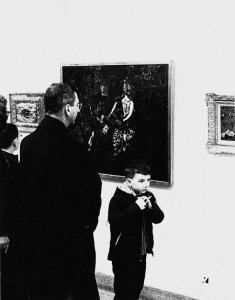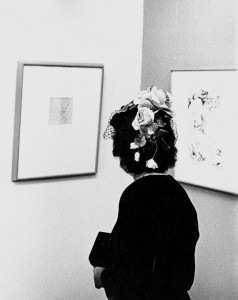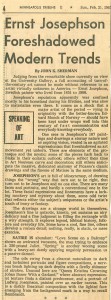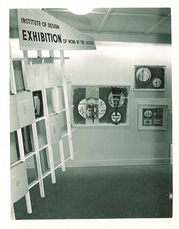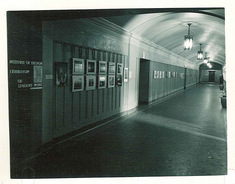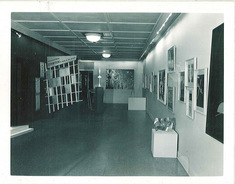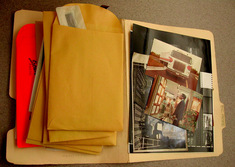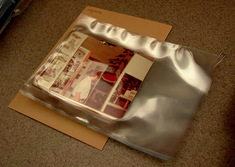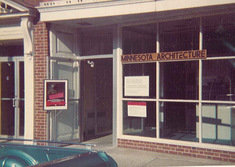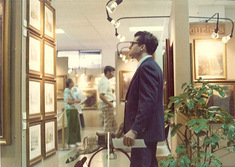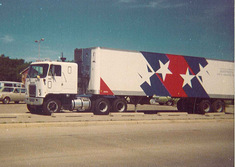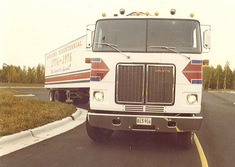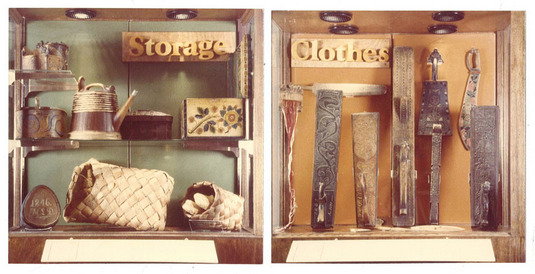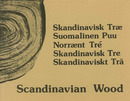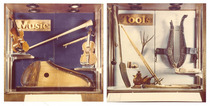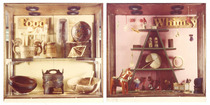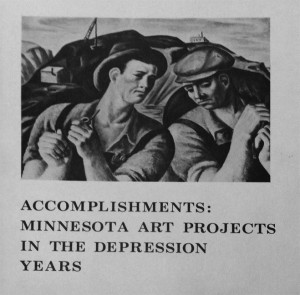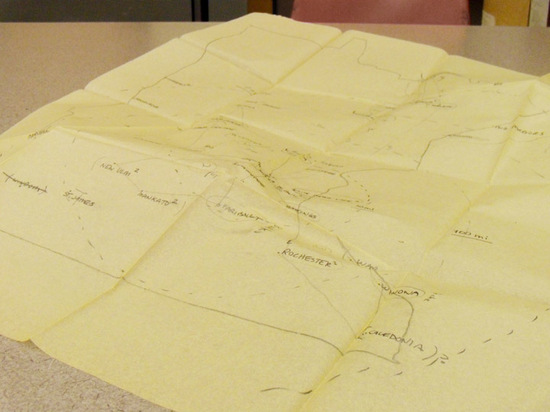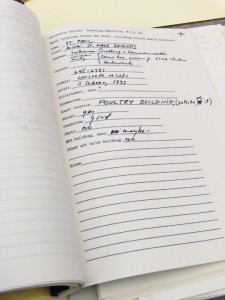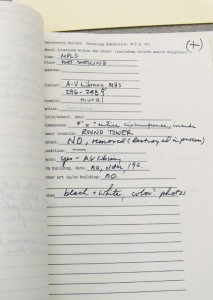In 1949, the University’s department of art began hiring visiting artists as instructors. Today, the artists Paul Burlin, Ralston Crawford, Arnold Blanch, Cameron Booth, and Philip Guston are all represented in the museum’s permanent collection whether through their own works or works done of them – no doubt related to their contributions to American art but also likely related to the time they spent with the University in the initial years of the visiting artist teaching program. Each artist was also featured in a Gallery exhibition which served, “both as a reception… and to introduce new members of the art department faculty to the public.” Catalogues from their exhibits were processed and are now contained in Box 110 of the WAM collection.
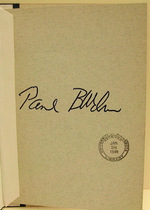 A January 3, 1949 UM News Release (Digital Conservancy) announces the first artist:
A January 3, 1949 UM News Release (Digital Conservancy) announces the first artist:
“Paul Burlin, well-known American painter and teacher at the Art Students’ league, Woodstock, N.Y. arrived in Minneapolis Tuesday (Jan. 4) to begin a three-month teaching schedule…
Burlin’s work here will inaugurate a new University department of art teaching program in which artists with various approaches to their work will teach for one quarter each at the University.”
Burlin in the WAM collection.
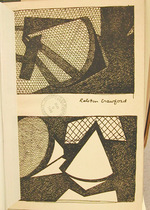 Ralston Crawford followed as visiting instructor in the Spring quarter. His exhibit at the Gallery ran from April 28-May 20, 1949. A March 18, 1949 UM News Release (Digital Conservancy) announces his background:
Ralston Crawford followed as visiting instructor in the Spring quarter. His exhibit at the Gallery ran from April 28-May 20, 1949. A March 18, 1949 UM News Release (Digital Conservancy) announces his background:
“He was sent by ‘Fortune’ magazine in 1946 as the only artist among 117 photographers and reporters who observed the atomic bomb tests at Bikini. His report, included abstract pictures of the destruction, appeared later in the December, 1946, issue…'”
Crawford in the WAM Collection.
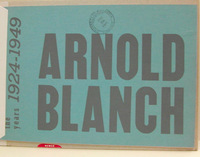 Visiting artist Arnold Blanch, a native of MN (Mantorville), taught an advanced painting course during his visit. A November 22, 1949 UM News Release (Digital Conservancy) announces Blanch’s eclectic November 29,1949-January, 6, 1950 exhibit at the Gallery:
Visiting artist Arnold Blanch, a native of MN (Mantorville), taught an advanced painting course during his visit. A November 22, 1949 UM News Release (Digital Conservancy) announces Blanch’s eclectic November 29,1949-January, 6, 1950 exhibit at the Gallery:
“The 39 paintings in his University exhibition include work from 1924 through 1949. A group from the 1930s is made up of work done in Florida.
Among the ceramics, are several bowls and a 1949 set consisted of a salad bowl and plates which has been produced commercially by well-known china manufacturer.
The scarves, also manufactured commercially, were made by the silk screen process. One of them, ‘The Picnic’, done in 1947 includes 20 different colors.
The Exhibition includes, ties, a hooked rug of abstract design and Christmas wrapping paper.”
Blanch in the WAM Collection.
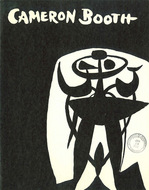 A Dec 4, 1950 UM News Release (Digital Conservancy) announces that “paintings and drawings by Cameron Booth, one of America’s leading abstract painters” will be on display in the Gallery from December 11, 1950-January 7, 1951. Booth, visiting from The Art Students’ League in New York, had previously taught at the Minneapolis School of Art and St. Paul School of Art.
A Dec 4, 1950 UM News Release (Digital Conservancy) announces that “paintings and drawings by Cameron Booth, one of America’s leading abstract painters” will be on display in the Gallery from December 11, 1950-January 7, 1951. Booth, visiting from The Art Students’ League in New York, had previously taught at the Minneapolis School of Art and St. Paul School of Art.
Booth in the WAM Collection.
An exhibition of the work of Philip Guston, a spring quarter visitor-artist was held April 10-May 12, 1950 at the University Gallery. A March 24, 1950 UM News Release (Digital Conservancy) indicated that the exhibit, “will include 16 paintings, a number of drawings, and photographs of several of his murals. Among these will be murals from the Queensbridge housing project, New York; the Social Security Buildings, Washinton, D.C.; and the WPA building façade at the New York World’s Fair.”
Works of Guston in the WAM Collection.
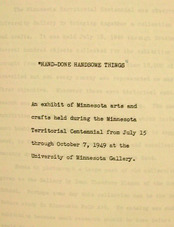 In order to commemorate the Minnesota Territorial Centennial, the University Gallery exhibited “the most humble object made at home because it had to supply some need, to those objects of great artistry and excellent craftsmanship which would grace any museum in the land.“
In order to commemorate the Minnesota Territorial Centennial, the University Gallery exhibited “the most humble object made at home because it had to supply some need, to those objects of great artistry and excellent craftsmanship which would grace any museum in the land.“





